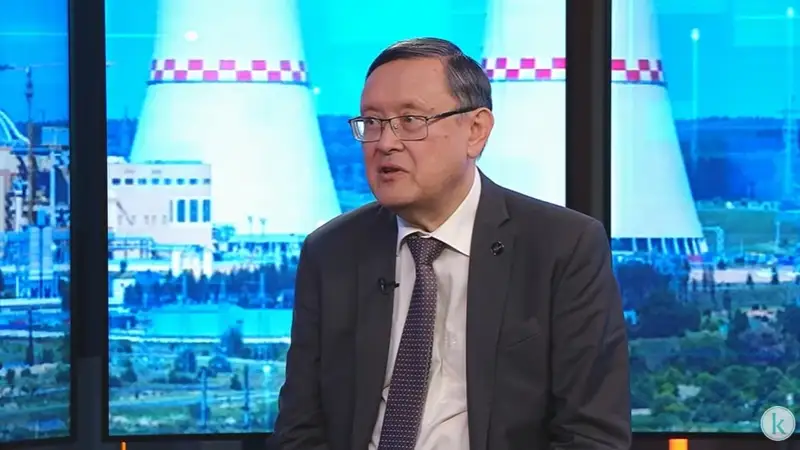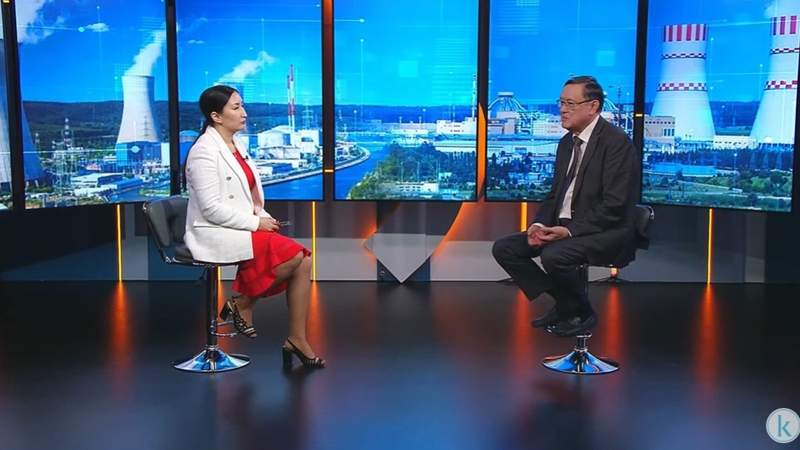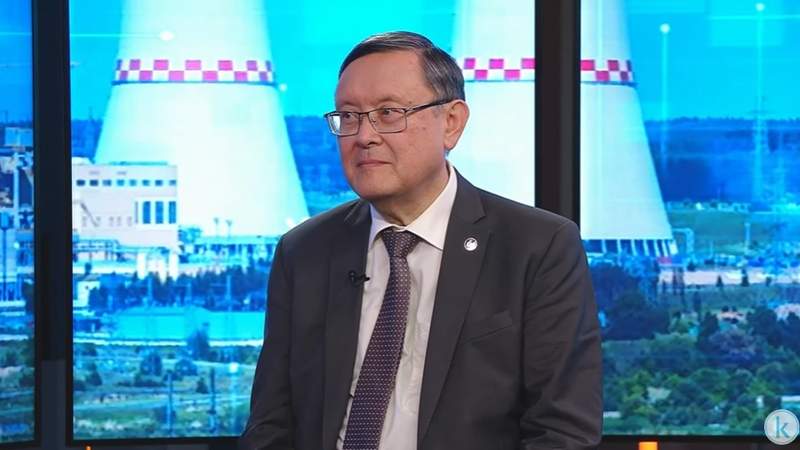Why Kazakhstan needs nuclear power plant - Interview with Timur Zhantikin
General Director of “Kazakhstan Nuclear Power Plants” company Timur Zhantikin in an interview with Kazinform News Agency told about the current state of Kazakhstan's energy system and the prospects for its development through the construction of nuclear power plants.

Zhantikin explained why building a nuclear power plant (NPP) is the best option for Kazakhstan, noting that energy diversification ensures generation stability and security. Kazakhstan has operating reactors and specialists who know how to handle nuclear reactors, which suggests that the NPP will operate without problems.
He also emphasized that the construction of NPPs will reduce the carbon footprint. More than 70% of electricity in Kazakhstan is now generated by coal-fired plants, which makes it necessary to switch to more environmentally friendly energy sources.
Zhantikin added that the NPP will not have a negative impact on Lake Balkhash, as its operation does not involve emissions or significant water consumption. The reactors are cooled in the same way as at conventional thermal power plants, using condensers.

In addition, the country has ranked first in the world in uranium mining since 2009 and produces nuclear fuel, making the development of nuclear power a logical step.
On the selection of partners for NPP construction
Zhantikin noted that when choosing a company to build a nuclear power plant, Kazakhstan focuses on projects with high reliability and safety.
"We chose projects that belong to generation 3 or 3+. And we took only a certain type of reactor, because they have shown their reliability, they have been in operation for more than 50 years, there have been no incidents at them. People talk about Chernobyl, but these are channel reactors of high power, we did not consider such reactors at all. Or Fukushima, that's a second generation reactor, terrestrial, but boiling. And this one is third generation, a reactor of high reliability, with improved economic performance, and of course safety first and foremost," Zhantikin said.
He also emphasized the importance of using Kazakhstan's nuclear fuel, which will ensure the long-term independence and stability of the country's energy system. The scientist told about current negotiations with potential partners and noted that most partners agree to use Kazakhstani fuel.
On the choice of reactors
Timur Zhantikin explained that Kazakhstan has already chosen water-water energetic reactors for safety reasons, although their capacity (1200-1400 MW) causes some difficulties in integrating them into the country's energy system. He believes that smaller reactors would be preferable for Kazakhstan.

On the current electricity deficit and the importance of nuclear power plants
As for covering the shortage of electricity, Zhantikin emphasized that the main task of the NPP is not only that, but also to ensure the sustainable development of the country's economy.
He noted that Kazakhstan currently exports a significant portion of its uranium, mainly in the form of raw materials. Kazakhstan thus remains a raw material economy, and to get out of this state it is necessary to develop the industry. However, many projects cannot be realized due to lack of energy, which emphasizes the importance of a reliable energy base for the industrial development of the country.
Zhantikin also emphasized that the presence of nuclear power in the country indicates a high-tech level and has a political influence in the international arena. Having a reliable power supply for a hundred years ahead will allow Kazakhstan to plan well for the industrial development of the economy.
On how long will it take to build a nuclear power plant
The General Director of “Kazakhstan Nuclear Power Plants” says that the NPP construction process involves many legal requirements and steps, such as site investigation, supplier selection, technology selection, plant tie-in and specific economic calculations. This is expected to take about two years. Construction of the plant itself will take up to five years, so commissioning is planned for 2032.
